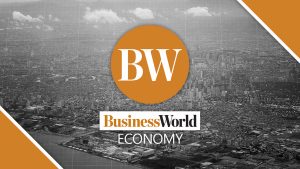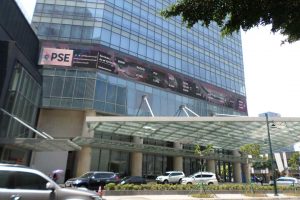House set to tackle wage hike bills next week

THE HOUSE of Representatives is set to tackle bills seeking to hike the minimum wage by P150 next week despite concerns this would pose a significant risk to inflation and discourage the entry of foreign investments.
“We are prepared to tackle pending bills in the House related to minimum wage increases,” Marikina City Rep. Stella Luz A. Quimbo told a news briefing on Wednesday.
House Bill (HB) No. 7871, authored by Deputy Speaker and Party-list Rep. Raymond Democrito C. Mendoza, and HB No. 514, filed by Cavite Rep. Ramon B. Revilla III, are proposing a P150 across-the-board wage increase for all private sector workers, whether agricultural or non-agricultural.
“Implementing a uniform wage increase across all regions of the country, each with its unique cost of living, necessitates careful consideration. We want the wage measure to be equitable and considerate of diverse economic conditions throughout the country,” Ms. Quimbo, who is also a senior vice chairperson of the House Committee on Appropriations, said.
Last week, Iloilo Rep. Janette T. Garin said the chamber is studying a proposed P350 to P400 wage hike. Opposition congressmen also previously filed a bill seeking to increase wages by P750.
On Monday, the Senate approved on third and final reading its P100 across-the-board wage increase despite warnings that such a hike could fan inflation.
However, HSBC economist for ASEAN Aris D. Dacanay on Wednesday said a legislated minimum wage increase will likely threaten the current downward trend in inflation, because an 8% hike in wages could add 1.2 percentage points to the overall headline inflation print.
“If there’s an 8% minimum wage hike, inflation can increase by 1.2 percentage points,” Mr. Dacanay said at an economic forum hosted by the Management Association of the Philippines on Wednesday.
Headline inflation eased to 2.8% in January from 3.9% in December, the second straight month it fell within the Philippine central bank’s 2-4% target.
Mr. Dacanay said that if the proposed legislated wage hikes were approved, or other risks to the inflation outlook materialize this year, the Bangko Sentral ng Pilipinas (BSP) may keep policy rates higher for longer.
“The BSP has room to delay its rate cuts mainly because we don’t have the growth problem,” he said. “Growth has been really strong so the BSP can really take its time. It has the luxury of time to be able to wait for inflation to stay within target before cutting rates.”
Last week, the BSP kept the key rate at 6.5% — the highest in nearly 17 years — for a third straight meeting as widely expected.
HSBC Global Research expects the BSP to cut policy rates by 25 bps in June, after the US Federal Reserve starts its own policy easing in the same month.
Mr. Dacanay sees the BSP slashing rates by a total of 75 bps this year, and by another 75 bps in 2025.
HSBC Global Research projects Philippine inflation to hit 3.5% this year, before picking up to 3.8% in 2025.
Last week, the BSP lowered its baseline inflation forecast for this year to 3.6% from 3.7%, but kept its projection for next year at 3.2%. Should risks materialize, inflation may hit 3.9% in 2024 before easing to 3.5% in 2025.
BSP Senior Assistant Governor Iluminada T. Sicat has said the BSP’s baseline inflation projections did not take the most recent wage hike proposals into account.
Based on the BSP’s latest monetary policy report, the baseline forecast includes the P40 minimum wage hike in the National Capital Region in July last year and the 8.7% average wage increase for non-agricultural workers in areas outside Metro Manila.
The central bank also factored in possible wage adjustments of P28 in August this year, and P29 in September 2025. If realized, this would be equal to an annual increase of 4.6% for both years, in line with historical wage increases.
“(If) the assumed increase in minimum wage is beyond what we have incorporated in the baseline… this could pose a threat to the inflation outlook in the future,” Ms. Sicat had said.
The BSP has also flagged other upside risks to inflation such as higher transport charges, increased electricity rates, higher oil and domestic food prices, and the additional impact on food prices of a strong El Niño episode.
BUSINESS GROUP REACTSMeanwhile, the Philippine Chamber of Commerce and Industry (PCCI) said a legislated wage hike could discourage foreign investors from entering the country.
“No one would ever try to look at the Philippines once they see that legislators can enact wage hikes anytime, even disregarding the authority of the National Wage Board,” PCCI President Enunina V. Mangio said in a statement.
The country’s last legislated wage hike was enacted in 1989. Republic Act No. 6727 or the Wage Rationalization Act raised the minimum wage by P25 to P89. The law also created the regional wage boards, which currently review and approve wage hike proposals.
Ms. Mangio said the Senate’s proposed P100 wage hike bill is unlikely to benefit the around 47 million workers in the informal sector.
“The P100 proposed wage will not even be enough when inflation goes up. Why don’t we instead legislate measures to address the rising cost in food prices and other issues that hamper our economic growth?” she added.
IMPACT OF WAGE HIKETrade Secretary Alfredo E. Pascual said the government is still studying the impact of the proposed wage hikes.
“We’re studying the impact on our end. I’ve not received the report yet of our analysts,” he told reporters on the sidelines of an economic forum on Wednesday.
For her part, Ms. Quimbo said lawmakers will consider the varied effects of wage hikes per region in their deliberations.
“A P100 wage hike in the National Capital Region is equivalent to a 16% increase, but in regions like the Zamboanga Peninsula, the increase would be about 26%,” she said in Filipino.
Metro Manila’s daily minimum wage rose by P40 to P610 in June, much lower than the P570 increase sought by some labor groups.
A family of five would need at least P13,797 a month or P460 a day to meet their basic needs, according to the Philippine Statistics Authority.
Meanwhile, Manila Rep. Joel R. Chua proposed a three-year staggered wage increase to offset its possible costs to employers.
“Under this format, hikes would be scheduled. Businesses, as well as the entire economy, wouldn’t be shocked,” he said in a statement in Filipino.
GoNegosyo founder Jose Ma. “Joey” A. Concepcion III said he also supports a staggered implementation of wage hikes, but expressed concern it may affect many enterprises.
“Not everybody can afford the P100 wage increase. Maybe the large corporations and those who are doing well but many are also not doing well. The micro might be exempted, but what about the medium-sized enterprises? They will be affected,” he said in a statement.
Deputy Minority Leader and Party-list Rep. Bernadette Herrera-Dy said wage hike proposals must include subsidies to ensure that employers would comply.
“A government wage subsidy covering most or all of the Cost of Living Allowance (COLA) component of wage orders can be among the incentives,” she said in a statement.
Foundation for Economic Freedom President Calixto V. Chikiamco said that subsidizing wage hikes won’t be enough, as smaller enterprises may just choose to lay off workers to cut costs or even close down.
“Small enterprises — for example, restaurants — will suffer additional costs and will have to pass on these mandated wage increases to their customers,” he said in a Viber message.
About 99.58% of Philippines’ business establishments are micro, small, and medium enterprises (MSMEs), the Department of Trade and Industry said in a 2021 report.
To help consumers, Mr. Chikiamco proposed to instead reduce tariff rates on rice imports to 10% from the current 35%.
This would “expand the minimum access volume of chicken, corn, pork, and fish, to reduce the cost of food, which will benefit not only formal wage workers but also informal workers,” he said. — Beatriz Marie D. Cruz and Keisha B. Ta-asan




